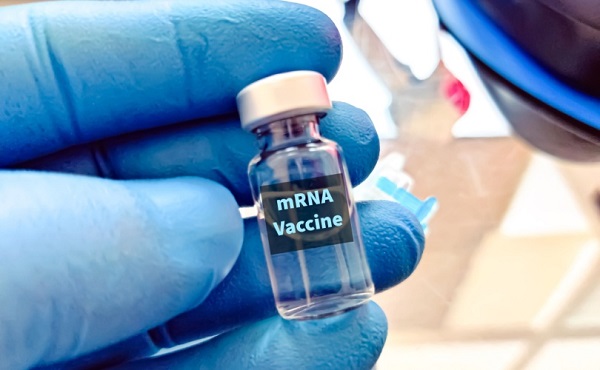Crime
Chinese Narco Suspect Caught in Private Meeting with Trudeau, Investigated by DEA, Linked to Panama, Caribbean, Mexico – Police Sources

 Sam Cooper
Sam Cooper
Shocking new details are emerging about a major Chinese organized crime suspect who met privately with Prime Minister Justin Trudeau, according to a police source who confirmed recent reporting from The Globe and Mail. The individual, Paul King Jin, is allegedly implicated in money laundering operations spanning the Western Hemisphere and has been a target of multiple failed major investigations in British Columbia. These investigations sought to unravel the complex interrelations of underground casinos and real estate investment, fentanyl and methamphetamine trafficking, and financial crimes that allegedly funnel drug proceeds from diaspora community underground banks throughout North America and Latin America, with connections to Chinese and Hong Kong financial institutions.
The failed investigations into Jin have involved both the RCMP and U.S. agencies. These operations stretch from Vancouver to Mexico, Panama, and beyond, multiple sources confirm.
Repeated efforts to reach Jin for comment through his lawyer in the British Columbia Cullen Commission, which stemmed from investigative journalism exposing BC casino money laundering, have not been successful. Recent BC civil forfeiture filings seeking to seize alleged money laundering proceeds from Jin, with cases connecting 14 Vancouver homes to entities in Hong Kong and China, also indicate Jin has not been responsive through a lawyer.
Highlighting longstanding U.S. government concerns over the B.C. investigations and suspects like Jin, Mayor Brad West confirmed in exclusive interviews with The Bureau that U.S. Secretary of State Antony Blinken expressed dismay over Canada’s failure to successfully prosecute Jin and Chinese crime networks, specifically citing the collapse of the E-Pirate investigation. Reportedly Canada’s largest-ever probe into money laundering, E-Pirate fell apart in court after cooperating witnesses were exposed. One of the Chinese Triad narcotics traffickers targeted in E-Pirate surveillance, Richard Yen Fat Chiu, was found stabbed and burned to death near the Venezuelan border on June 20, 2019, according to Colombian news reports.
The Bureau has verified with a source possessing direct knowledge of Canadian policing failures that crucial intelligence regarding Sam Gor—a massive transnational crime syndicate—was provided to the RCMP by U.S. agencies yet failed to result in prosecutions.
One primary source confirmed a new detail reported by The Globe and Mail: Prime Minister Justin Trudeau was entangled in an RCMP surveillance operation that targeted Paul Jin and the Sam Gor networks in Richmond, British Columbia. The Globe reported that early in his tenure, Trudeau met with Jin at a closed-door gathering at the Executive Inn Express Richmond, near Vancouver International Airport. Three sources corroborated the meeting according to The Globe, which took place between late 2015 and early 2017. Also present at the meeting was a Chinese army veteran with close ties to Beijing. The Globe noted that the veteran had attended social events with Chinese diplomats, reinforcing concerns about political and security risks posed by these associations.
The Bureau’s police source, who is independent of The Globe’s sources, confirmed they were aware of the RCMP surveillance operation that placed Trudeau, Jin, and the Chinese army veteran together in a private meeting.
Meanwhile, Jin himself has been surveilled in meetings with Chinese police officers who have traveled to Richmond, according to a separate police source with extensive knowledge of Chinese organized crime and influence operations in Canada. Two sources further stated that Jin continues to operate underground casino networks in Richmond, where law enforcement intelligence believes he has erected a mansion using front owners. Membership at this establishment is reportedly set at $100,000 for high-rollers.
According to a criminal intelligence source, Jin has alleged ties to China’s Ministry of Public Security and the network of clandestine Chinese police stations in British Columbia investigated by the RCMP. Two sources confirmed that Jin has allegedly acquired a new luxury mansion in Richmond, registered under a nominee—an established organized crime tactic.
“Jin uses one of his flunkies as a nominee for it. Common practice,” the source said. They further alleged that one of Jin’s associates tied to the mansion was implicated with Jin in a significant 2009 methamphetamine investigation. “Again, the use of nominees for real estate and businesses. Organized crime 101.”
Jin’s activities extend well beyond Canada, two sources alleged.
“He’s spending a lot of time in Latin America and the Caribbean,” a source said. “Asian organized crime is running amok. Foreign actor interference is getting really established. How it works is the current government welcoming any contributions from the motherland. What does this have to do with Asian organized crime in Canada? There’s a trade connection now from those areas in Latin America and the Caribbean to Canadian Asian organized crime commodity trades, primarily via the Maritimes.”
Jin has also been linked to international criminal networks, with two sources indicating that he and other high-level Canadian Triad associates have been traveling extensively to Panama and other Latin American jurisdictions. These movements align with intelligence connecting Canadian Triads to Mexican cartel operatives, facilitating narcotics trafficking, money laundering, and commodity smuggling into the United States.
Panama, which Trump administration State Secretary Marco Rubio has flagged as a hub of Chinese crime and state influence, has emerged as a focal point for Jin’s operations. “Jin was spending an awful lot more time down in Panama, where we think he is putting a lot of his capital there,” a source familiar with North American law enforcement investigations said. “They have the same kind of problem going on in Panama City as Vancouver, with all of the condo towers, and they’re empty. So people are plowing money into that place too.”
Adding to the concerns, a source disclosed that Jin’s travels to Panama raised red flags within international law enforcement circles. Jin flew from Vancouver to Toronto, then to Mexico City, Colombia, and finally Panama. Upon arrival, Panamanian customs flagged discrepancies in his travel documents, detecting an alternate identity. He was deemed inadmissible and promptly deported along the same route back to Canada.
“They said, ‘No, you’re inadmissible. Something’s wrong here. You’re traveling under this name, but we have you here as another person.’ So Panama punted him and sent him back exactly the same route, and we caught wind of this because of the liaison office down in Bogota,” the source, who could not be identified due to sensitivities in Canada, said. “And they let us know, and locally, the CBSA guys let the Toronto guys know because that’s where he would clear Canada Customs coming back. So they were like, ‘Okay, this is worthy of an interview.’ And they put a flag in the system and everything else.
“To make a long story short, it all fell flat. Nobody interviewed him. He just came right back—came right back to his place here in Vancouver. And so it just shows you the brokenness of our own system, that we can’t even get a key guy like that consistently checked and stopped, and he’s traveling under false papers.”
Jin’s expanding influence in Panama is a significant development aligning with Trump administration concerns, the source said, underscoring broader fears about China’s growing criminal and political footprint in the Western Hemisphere.
The Bureau previously reported that the latest BC civil forfeiture case—the fourth against Jin in three years—suggests he is actively evading British Columbia court procedures. Court filings state that after being banned from British Columbia casinos, Paul King Jin shifted his operations to illegal gaming houses, generating over $32 million in just four months in 2015. These underground casinos became a crucial node in a cash-based network fueling the proliferation of synthetic drugs across North America.
The case intensified in November 2022 when Everwell Knight Limited, a Hong Kong-registered entity holding mortgages on 14 disputed properties linked to Jin, sought to dismiss the government’s forfeiture claim on procedural grounds. Everwell’s legal team invoked the Canadian Charter of Rights—an increasingly common legal strategy in Canadian money laundering cases—arguing that the Director of Civil Forfeiture had failed to meet procedural requirements.
In April 2023, the Director of Civil Forfeiture responded with a default judgment application, contending that Jin’s failure to file a defense effectively conceded key allegations. The case also underscored Jin’s pattern of evasion, with the Director’s counsel noting that an unnamed lawyer initially suggested they might represent Jin but then ceased communication, leaving his legal status unresolved.
Regarding another key Sam Gor associate, E-Pirate target Richard Chiu—the Vancouver-area drug kingpin found burned and stabbed in 2019 near Cúcuta, a city close to the Colombian border with Venezuela—Chiu had previously been convicted in Massachusetts in 2002 for conspiracy to distribute and possess heroin.
According to B.C. Supreme Court documents, Chiu was the subject of multiple Vancouver police drug investigations. In 2017, during one such probe, authorities surveilled an Audi Q7 leased to him. Civil forfeiture filings state that police observed Chiu’s wife, Kimberly Chiu, exiting the vehicle while a “known gang associate” placed a heavy bag into the trunk.
Kimberly Chiu later became the subject of a civil forfeiture case after police seized $317,000 from the Audi—most of it packed in vacuum-sealed bundles inside a duffel bag. However, unlike other suspects, Richard Chiu was never criminally charged in Canada or directly sued by the director of civil forfeiture.
The government’s statement of claim alleged that Kimberly Chiu was “acting as a courier for Asian organized crime,” a claim she denied. In her defense, she argued that Vancouver police had no lawful grounds to detain or search her.
The collapse of E-Pirate and related Canadian law enforcement failures prompted then-B.C. Attorney General David Eby to launch a review, but it led to no legal reforms or policy changes in the province.
Business
Closing information gaps to strengthen Canada’s border security and track fentanyl

By Sean Parker, Dawn Jutla, and Peter Copeland for Inside Policy
To promote better results, we lay out a collaborative approach
Despite exaggerated claims about how much fentanyl is trafficked across the border from Canada to the United States, the reality is that our detection, search, and seizure capacity is extremely limited.
We’re dealing with a “known unknown”: a risk we’re aware of, but don’t yet have the capacity to understand its extent.
What’s more, it may be that the flow of precursor chemicals—ingredients used in the production of fentanyl—is where much of the concern lies. Until we enhance our tracking, search, and seizure capacity, much will remain speculative.
As border security is further scrutinized, and the extent of fentanyl production and trafficking gets brought into sharper focus, the role of the federal government’s Precursor Chemical Risk Management Unit (PCRMU)—announced recently by Health Canada—will become apparent.
Ottawa recently took action to enhance the capabilities of the PCRMU. It says the new unit will “provide better insights into precursor chemicals, distribution channels, and enhanced monitoring and surveillance to enable timely law enforcement action.” The big question is, how will the PCRMU track the precursor drugs entering into Canada that are used to produce fentanyl?
Key players in the import-export ecosystem do not have the right regulatory framework and responsibilities to track and share information, detect suspect activities, and be incentivized to act on it. That’s one of the reasons why we know so little about how much fentanyl is produced and trafficked.
Without proper collaboration with industry, law enforcement, and financial institutions, these tracking efforts are doomed to fail. To promote better results, we lay out a collaborative approach that distributes responsibilities and retools incentives. These measures would enhance information collection capabilities, incentivize system actors to compliance, and better equip law enforcement and border security services for the safety of Canadians.
Trade-off bottleneck: addressing the costs of enhanced screening
To date, it’s been challenging to increase our ability to detect, search, and seize illegal goods trafficked through ports and border crossings. This is due to trade-offs between heightened manual search and seizure efforts at ports of entry, and the economic impacts of these efforts.
In 2024, the Canada Border Services Agency (CBSA) admitted over 93 million travelers. Meanwhile, 5.3 million trucks transported commercial goods into Canada, around 3.6 million shipments arrived via air cargo, nearly 2 million containers were processed at Canadian ports, roughly 1.9 million rail cars carried goods into the country, and about 145.7 million courier shipments crossed the border. The CBSA employs a risk-based approach to border security, utilizing intelligence, behavioral analysis, and random selection to identify individuals or shipments that may warrant additional scrutiny. This triaging process aims to balance effective enforcement with the facilitation of legitimate travel and trade.
Exact percentages of travelers subjected to secondary inspections are not publicly disclosed, but it’s understood that only a small fraction undergo such scrutiny. We don’t learn about the prevalence of these issues through our border screening measures, but in crime reporting data—after it’s too late to avert.
It’s key to have an approach that minimizes time and personnel resources deployed at points of entry. To be effective without being economically disruptive, policymakers, law enforcement, and border security need to strengthen requirements for information gathering, live tracking, and sharing. Legislative and regulatory change to require additional information of buyers and sellers—along with stringent penalties to enforce non-compliance—is a low-cost, logistically efficient way of distributing responsibility for this complex and multifaceted issue. A key concept explored in this paper is strengthening governance controls (“controls”) over fentanyl supply chains through new processes and data digitization, which could aid the PCRMU in their strategic objectives.
Enhanced supply chain controls are needed
When it comes to detailed supply chain knowledge of fentanyl precursor chemicals moving in and out of Canada, regulator knowledge is limited.
That’s why regulatory reform is the backbone of change. It’s necessary to ensure that strategic objectives are met by all accountable stakeholders to protect the supply chain and identify issues. To rectify the issues, solutions can be taken by the PCRMU to obtain and govern a modern fentanyl traceability system/platform (“platform”) that would provide live transparency to regulators.
A fresh set of supply chain controls, integrated into a platform as shown in Fig. 1, could significantly aid the PCRMU in identifying suspicious activities and prioritizing investigations.

Our described system has two distinctive streams: one which leverages a combination of physical controls such as package tampering and altered documentation against a second stream that looks at payment counterparties. Customs agencies, transporters, receivers, and financial institutions would have a hand in ensuring that controls in the platform are working. The platform includes several embedded controls to enhance supply chain oversight. It uses commercially available Vision AI to assess packaging and blockchain cryptography to verify shipment documentation integrity. Shipment weight and quantity are tracked from source to destination to detect diversion, while a four-eyes verification process ensures independent reconciliation by the seller, customs, and receiver. Additionally, payment details are linked to shipments to uncover suspicious financial activity and support investigations by financial institutions and regulators like FINTRAC and FINCEN.
A modern platform securely distributes responsibility in a way that’s cost effective and efficient so as not to overburden any one actor. It also ensures that companies of all sizes can participate, and protects them from exploitation by criminals and reputational damage.
In addition to these technological enhancements and more robust system controls, better collaboration between the key players in the fentanyl supply chain is needed, along with policy changes to incentivize each key fentanyl supply chain stakeholder to adopt the new controls.
Canadian financial institutions: a chance for further scrutiny
Financial institutions (FIs) are usually the first point of contact when a payment is being made by a purchaser to a supplier for precursor chemicals that could be used in the production of fentanyl. It is crucial that they enhance their screening and security processes.
Chemicals may be purchased by wires or via import letters of credit. The latter is the more likely of the two instruments to be used because this ensures that the terms and conditions in the letter of credit are met with proof of shipment prior to payment being released. Payments via wire require less transparency.
Where a buyer pays for precursor chemicals with a wire, it should result in further scrutiny by the financial institution. Requests for supporting documentation including terms and conditions, along with proof of shipment and receipt, should be provided. Under new regulatory policy, buyers would be required to place such supporting documentation on the shared platform.
The less transparent a payment channel is in relation to the supply chain, the more concerning it should be from a risk point of view. Certain payment channels may be leveraged to further mask illicit activity throughout the supply chain. At the onset of the relationship the seller and buyers would link payment information on the platform (payment channel, recipient name, recipient’s bank, date, and payment amount) to each precursor or fentanyl shipment. The supplier, in turn, should record match payment information (payment channel, supplier name, supplier’s bank, date, and payment amount).
Linking payment to physical shipment would enable data analytics to detect irregularities. An irregularity is flagged when the amounts and/or volume of payments far exceed the value of the received goods or vice versa. The system would be able to understand which fentanyl supply chains tend to use a particular set of FIs. This makes it possible to conduct real-time mapping of companies, their fentanyl and precursor shipments and receipts, and the payment institutions they use. With this bigger picture, FIs and law enforcement could connect the dots faster.
Live traceability reporting
Today, suppliers of fentanyl precursors are subject to the Pre-Export Notification Online (PEN Online) database. This database enables governments to monitor international trade in precursor chemicals by sending and receiving pre-export notifications. The system helps prevent the diversion of chemicals used in the illicit manufacture of drugs by allowing authorities to verify the legitimacy of shipments before they occur.
To further strengthen oversight, the platform utilizes immutability technologies—such as blockchain or secure immutable databases—which can be employed to encrypt all shipping documents and securely share them. This presents an auditable form of chain-of-custody and makes any alterations apparent. Customs and buyers would have the capability to verify the authenticity of the originating documents in a way that doesn’t compromise business confidentiality. With the use of these technologies, law enforcement can narrow down their investigations.
An information gap currently exists as the receivers of the shipments don’t share their receipts information with PEN. To strengthen governance on fentanyl supply chains, regulatory policy and legislative changes are needed. The private sector should be mandated to report received quantities of fentanyl or its precursors, as well as suspicious receiving destinations. This could be accomplished on the platform which would embed the receiving process, a reconciliation process of the transaction, the secure upload and sharing of documents, and would be minimally disruptive to business processes.
Additionally, geo-location technology embedded in mobile devices and/or shipments would provide real-time location-based tracking of custody transactions. These geo-controls would ensure accountability across the fentanyl supply chain, in particular where shipments veer off or stop too long on regular shipping routes. Canadian transporters of fentanyl and its precursor chemicals should play an important role in detecting illicit diversion/activities.
Digital labelling
Licensed fentanyl manufacturers could add new unique digital labels to their shipments to get expedited clearance. For example, immutable digital labelling platforms enable tamper-proof digital labels for legitimate fentanyl shipments. This would give pharmacies, doctors, and regulators transparency into the fentanyl’s:
- Chemical composition and concentrations (determining legitimate vs. adulterated versions of the drug)
- Manufacturing facility ID, batch ID, and regulatory compliance status
- Intended buyer authentication (such as licensed pharmaceutical firms or distributors)
Immutable digital labelling platforms offer secure role-based access control. They can display customized data views according to time of day, language, and location. Digital labels could enable international border agencies and law enforcement to receive usable data, allowing legal shipments through faster while triggering closer shipment examinations for those without of a digital label.
International and domestic transporter controls
Transporters act as intermediaries in the supply chain. Their operations could be monitored through a regulatory policy that mandates their participation in the platform for fentanyl and precursor shipments. The platform would support a mobile app interface for participants on-the-move, as well as a web portal and application programming interfaces (APIs) for large-size supply chain participants. Secure scanning of packaging at multiple checkpoints, combined with real-time tracking, would provide an additional layer of protection against fraud, truckers taking bribes, and unauthorized alterations to shipments and documents.
Regulators and law enforcement participation
Technology-based fentanyl controls for suppliers, buyers, and transporters may be reinforced by international customs and law enforcement collaboration on the platform. Both CBSA and law enforcement could log in and view alerts about suspicious activities issued from the FIs, transporters, or receivers. The reporting would allow government personnel to view a breakdown of fentanyl importers, the number of import permit applications, and the amount of fentanyl and its precursors flowing into the country. Responsible regulatory agencies—such as the CBSA and PCRMU—could leverage the reporting to identify hot spots.
The platform would use machine learning to support CBSA personnel in processing an incoming fentanyl or precursor shipment. Machine learning refers to AI algorithms and systems that improve their knowledge with experience. For example, an AI assistant on the traceability system could use machine learning to predict and communicate which import shipments arriving at the border should be passed. It can base these suggestions on criteria like volume, price, origin of raw materials, and origin of material at import point. It can also leverage data from other sources such as buyers, sellers, and banks to make predictions. As an outcome, the shipment may be recommended to pass, flagged as suspicious, or deemed to require an investigation by CBSA.
It’s necessary to keep up to date on new precursor chemicals as the drug is reformulated. Here, Health Canada can play a role, using its new labs and tests—expected as part of the recently announced Canadian Drug Analysis Centre—to provide chemical analysis of seized fentanyl. This would inform which additional chemical supply chains should be tracked in the PCRMU’s collaborative platform, and all stakeholders would widen their scope of review.
These new tools would complement existing cross-border initiatives, including joint U.S.-Canada and U.S.-Mexico crackdowns on illicit drug labs, as well as sovereign efforts. They have the potential to play a vital role in addressing fentanyl trafficking.
A robust, multi-pronged strategy—integrating existing safeguards with a new PCRMU traceability platform—could significantly disrupt the illegal production and distribution of fentanyl. By tracking critical supply chain events and authenticating shipment data, the platform would equip law enforcement and border agencies in Canada, the U.S., and Mexico with timely, actionable intelligence. The human toll demands urgency: from 2017 to 2022, the U.S. averaged 80,000 opioid-related deaths annually, while Canada saw roughly 5,500 per year from 2016 to 2024. In just the first nine months of 2024, Canadian emergency services responded to 28,813 opioid-related overdoses.
Combating this crisis requires more than enforcement. It demands enforceable transparency. Strengthened governance—powered by advanced traceability technology and coordinated public-private collaboration—is essential. This paper outlines key digital controls that can be implemented by global suppliers, Canadian buyers, transporters, customs, and financial institutions. With federal leadership, Canada can spearhead the adoption of proven, homegrown technologies to secure fentanyl supply chains and save lives.
Sean Parker is a compliance leader with well over a decade of experience in financial crime compliance, and a contributor to the Macdonald-Laurier Institute.
Dawn Jutla is the CEO of Peer Ledger, the maker of a traceability platform that embeds new control processes on supply chains, and a professor at the Sobey School of Business.
Peter Copeland is deputy director of domestic policy at the Macdonald-Laurier Institute.
2025 Federal Election
‘Sadistic’ Canadian murderer claiming to be woman denied transfer to female prison

From LifeSiteNews
The logical decision to house the male murderer with men flies in the face of the Liberal Party’s official stance, which is to incarcerate prisoners according to their ‘self-identified’ gender.
A Canadian man who butchered his family and now claims to be a woman will not be allowed to transfer to a female prison.
On April 8, Correctional Services Canada (CSC) announced that Mohamad Al Ballouz, who brutally murdered his wife and two children, will be sent to a men’s prison, despite claiming to be a woman, according to CTV News.
“When there are overriding health and safety concerns, the request is denied and alternatives are put in place to meet the offender’s gender‑related needs at the institution where they are incarcerated,” the CSC statement reads.
Following an assessment of Al Ballouz request, CSC confirmed that he “will be incarcerated in a men’s institution.”
On December 16, Al Ballouz, a 38-year-old from Quebec, was found guilty second-degree murder of his wife Synthia Bussières, first-degree murder of five-year-old Eliam and two-year-old Zac, and one count of attempted arson.
Crown prosecutor Éric Nadeau revealed that the murder took place in September 2022 when Al Ballouz slaughtered his family at their Brossard apartment. He stabbed his wife 23 times before suffocated his children and trying to set the apartment on fire. He then ingested windshield washer fluid, which is believed to have been a suicide attempt.
During the trial, Quebec Superior Justice Eric Downs described Al Ballouz, as having a “sadistic character” and being “deeply narcissistic.” He was sentenced to life imprisonment with no chance of parole for 25 years.
Throughout the trial, Al Ballouz, a biological male, claimed to be a woman and demanded that he be referred to as “Levana,” a change which was made after he was charged for his crimes. Notably, the Canadian Broadcasting Report’s (CBC’s) report of the case refers to the convicted murder as “she” and uses his fake name.
Following his sentencing, the murderer requested to be sent to the Joliette Institution for Women; however, Downs responded that is a decision for Correctional Service Canada.
Currently under the Liberal Party, the policy is to place prisoners according to their “self-identified” gender, not according to biology. As a result, male rapists and murderers can be sent to prison with females.
However, Al Ballouz’s case caused an uproar on social media as many pointed out that putting the murderer in a women’s prison would pose a danger to female inmates.
Conservative Party leader Pierre Poilievre has condemned the Liberal policy and promised that he would end this practice if elected.
“Surreal: A man who killed his wife and two kids now claims he is a woman to go to a female prison,” he wrote in a December 22 post on X.
“I can’t believe I have to say this: but when I’m PM, there will be no male prisoners in female jails,” Poilievre continued. “Period.”
-

 2025 Federal Election2 days ago
2025 Federal Election2 days agoNo Matter The Winner – My Canada Is Gone
-

 2025 Federal Election1 day ago
2025 Federal Election1 day agoCSIS Warned Beijing Would Brand Conservatives as Trumpian. Now Carney’s Campaign Is Doing It.
-

 2025 Federal Election1 day ago
2025 Federal Election1 day agoInside Buttongate: How the Liberal Swamp Tried to Smear the Conservative Movement — and Got Exposed
-

 2025 Federal Election2 days ago
2025 Federal Election2 days agoASK YOURSELF! – Can Canada Endure, or Afford the Economic Stagnation of Carney’s Costly Climate Vision?
-

 Alberta2 days ago
Alberta2 days agoMade in Alberta! Province makes it easier to support local products with Buy Local program
-

 Alberta2 days ago
Alberta2 days agoProvince to expand services provided by Alberta Sheriffs: New policing option for municipalities
-

 International1 day ago
International1 day agoTulsi Gabbard tells Trump she has ‘evidence’ voting machines are ‘vulnerable to hackers’
-

 COVID-1923 hours ago
COVID-1923 hours agoCOVID virus, vaccines are driving explosion in cancer, billionaire scientist tells Tucker Carlson










